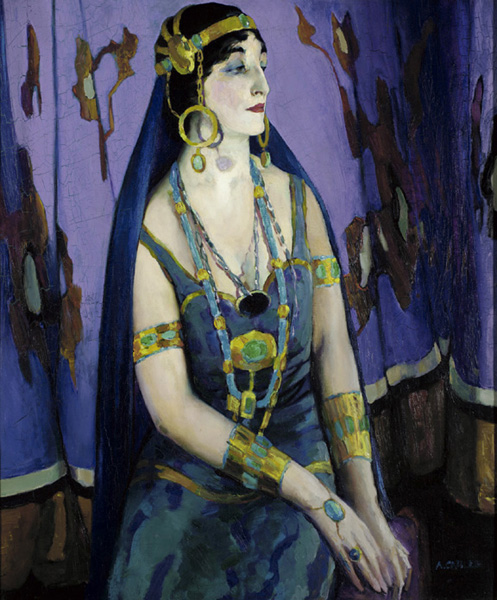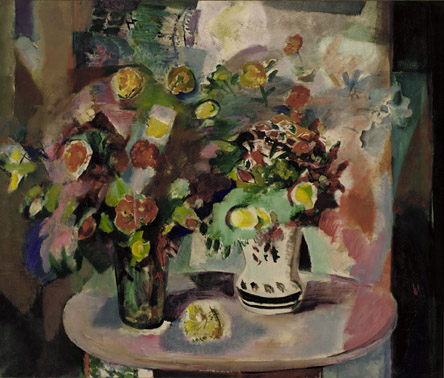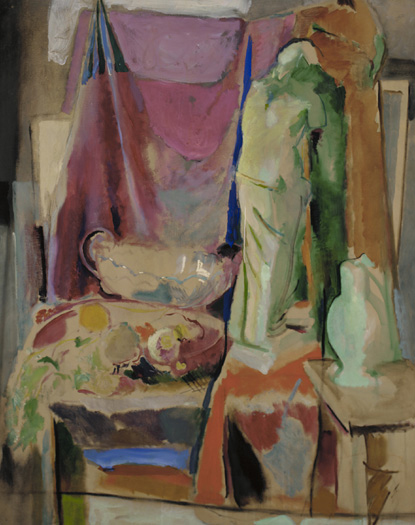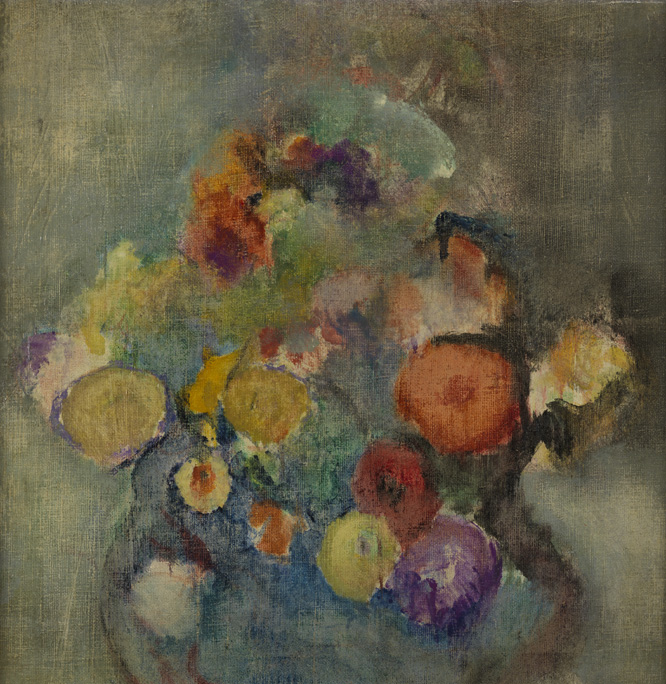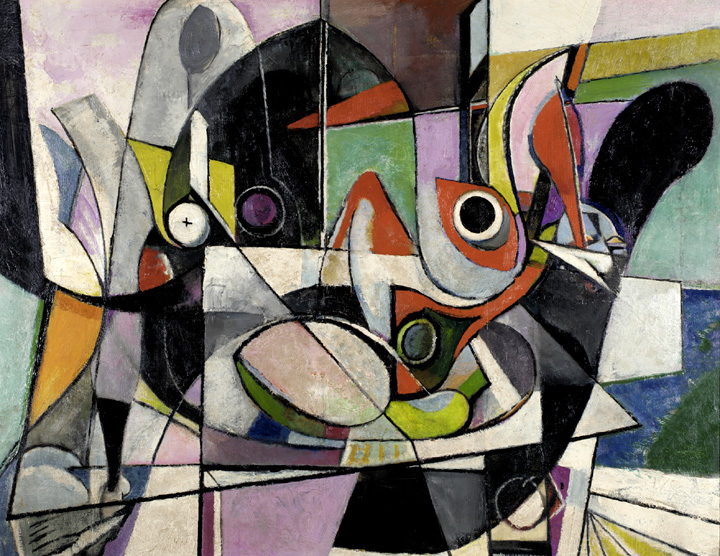
Composition No. 6
Arthur Beecher Carles
Executed in 1936, in the last years of his career, this painting represents Arthur B. Carles's continuing explorations of the expressive power of color, for which the artist had long been noted. reds, violets, and greens set up a forceful counterplay of primary, secondary, and tertiary colors. Carles was greatly influenced by the vivid coloristic effects of Matisse and Cézanne, whose work he certainly could have seen in his French residency of 1907-10, not to mention in three separate group exhibitions featuring Cézanne during Carles's extended visit to Paris in 1912. The jagged, interpenetrating forms of the composition, however, represent a new area of interest for Carles that had begun to solidify in the previous decade, also based on his European experiences. The spatial investigations of Cubism, developed initially by Picasso and Braque, were widely disseminated by other artists such as the so-called Puteaux Group. The 1912 Salon d'Automne - where Carles himself exhibited a still life - featured the Maison Cubiste, an installation of Cubist paintings by the Puteaux Group. "Composition No. 6" is a triumphant union of twin strands of modernist interest by a painter who continually responded to his era's dramatic artistic changes.
Artist
Date of Birth
(1882-1952)
Date
1936
Medium
Oil on canvas
Dimensions
40 3/4 x 51 1/4 in. (103.5 x 130.2 cm.)
Accession #
1957.25
Credit Line
Gift of Joseph Wood, Jr.
Copyright
© artist or artist's estate
Category
Subject
We're so excited you're planning to visit PAFA!
Make time for art — visit us Thursday to Sunday.
Before reserving your tickets, please review helpful information about museum hours, accessibility, building access, and special admission programs.
If you have any questions, feel free to reach out to us at visitorservices@pafa.org — we’d love to help!
